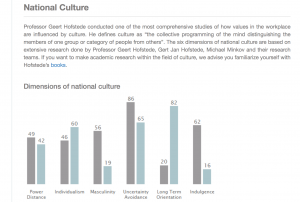
I attended the VATE conference and I learned a lot about teachers and what English teachers go through. The speakers at the VATE conference were pretty well received. On Friday, we arrived to Hampton fairly early, and we sat in on the panel for student teachers. It was interesting to learn how the teaching program differs at each college. The student representatives from colleges in Virginia told us about their teaching program. Each program differed slightly from the program at Longwood, as we seem to have the most hours required in the secondary classroom. The students explained how in their colleges they have hours attached to each Education class. However, each class only requires them to have less than 10 hours, so it seems like they would see a lot of different teaching styles, but its hard to imagine visiting that many schools in such a little amount of time. The students also mentioned that they do not have a specific class for classroom management, that they just learn about it in each class. I think that its smart of Longwood to have a three credit class dedicated to teaching classroom management and behavior management. I think that being able to control a classroom is such a big part of teaching that colleges should most definitely have a class specifically on controlling a class.

The rest of Friday was kind of unorganized, it seemed like VATE had done a lot of the conference last minute, and there was not a map of the speakers in certain rooms. We got lost looking for a session to attend and did not have one until later that night. However, there was another Longwood graduate with me, so we talked about life after undergrad and I learned a lot about the Reading and Language Learning program at Longwood.

One of the DOE members was the Keynote speaker on Saturday, and she was very informative. She talked about how the SOL for English is changing, but the changes are not that drastic. Its really more clarifying what exactly teachers should be teaching, and using language that parents want to see. I really liked her philosophy of the SOL because she does not think people should be teaching just for the test, she thinks we should be teaching certain content and helping students with real life skills. She also talked about how the Board of Education is about to change the Standards of Accreditation to require
“school divisions to provide policies on the use of sexually explicit instructional materials to parents or guardians with the copy of the syllabus for each high school course and to include a notice to parents identifying any sexually explicit materials that may be included in the course, the textbook, or any supplemental instructional materials”(SOA).
The speaker was really concerned that this will effect teachers, specifically making them scared to teach any material that has any questionable content.
I think that this is ridiculous and just moves the world of education backwards. Furthermore, the board needs to specifically state what exactly constitutes as “sexually explicit” because one parent’s view of sexual content could be totally different from another. Children who have very religious parents may only have access to certain texts  during school, and if teachers have to explain what exactly is in the content, they may not let the student read it, even if the student wants to. Additionally, there are so many classic English books that have content that could be considered sexually explicit. I feel like giving the parents the opportunity to say “no my kid will not read this” will mean that they might do it just because they feel like they can. A lot of parents do not understand the need for their children to read diverse texts that may have mature content. However, if kids are not exposed to these texts, what will they do when they encounter them in the real world? If we shelter children from a whole world of text, we are doing them a huge disservice.
during school, and if teachers have to explain what exactly is in the content, they may not let the student read it, even if the student wants to. Additionally, there are so many classic English books that have content that could be considered sexually explicit. I feel like giving the parents the opportunity to say “no my kid will not read this” will mean that they might do it just because they feel like they can. A lot of parents do not understand the need for their children to read diverse texts that may have mature content. However, if kids are not exposed to these texts, what will they do when they encounter them in the real world? If we shelter children from a whole world of text, we are doing them a huge disservice.




